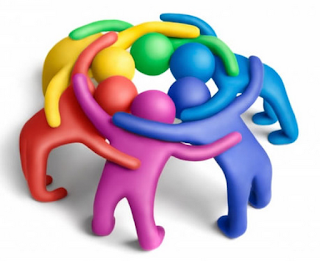Helpful Resources
Authentic Resources
Center on the Developing Child–Harvard University. (n.d.). Three core concepts in early development: 1.
Experiences build brain architecture. [Video file]. Retireved fromhttp://developingchild.harvard.edu/index.php/resources/multimedia/videos/three_core_concepts/brain_architecture/
Center on the Developing Child–Harvard University. (n.d.). Three core concepts in early development: 2. Serve & return interaction shapes brain circuitry. [Video file]. Retrieved fromhttp://developingchild.harvard.edu/resources/multimedia/videos/three_core_concepts/serve_and_return/
Center on the Developing Child–Harvard University. (n.d.). Three core concepts in early development: 3. Toxic stress derails healthy development. [Video file]. Retireved fromhttp://developingchild.harvard.edu/index.php/resources/multimedia/videos/three_core_concepts/toxic_stress/
Coplan, R. J., & Armer, M. (2007). A "multitude" of solitude: A closer look at social withdrawal and nonsocial play in early childhood. Child Development Perspectives, 1(1), 26-32.
Cowan, P. A., & Cowan, C. P. (2007). Attachment theory: Seven unresolved issues and questions for future research. Research in Human Development, 4(3/4), 181-201. DOI: 10.1080/15427600701663007
Easterbrooks, M. A., Driscoll, J. R., & Bartlett, J. D. (2008). Resilience in infancy: A relational approach. Research in Human Development, 5(3), 139-152. DOI: 10.1080/15427600802273987
Easterbrooks, M. A., Driscoll, J. R., & Bartlett, J. D. (2008). Resilience in infancy: A relational approach. Research in Human Development, 5(3), 139-152. DOI: 10.1080/15427600802273987
Engle, P. L., Black, M. M., Behrman, J. R., Cabral de Mello, M., Gertler, P. J. Kapiriri, L., . . . International Child Development Steering Group. (2007). Child development in developing countries 3: Strategies to avoid the loss of developmental potential in more than 200 million children in the developing world. The Lancet, 369(9557), 229-242.
Goldman, B. (2007). The first cut. Nature, 445(1), 479-480.
Gordon, M., & Green, J, (2008). Roots of empathy: Changing the world, child by child. Education Canada, 48(2), 34-36.
Grantham-McGregor, S., Cheung, Y. B., Cueto, S., Glewwe, P, Richter, L., Strupp, L., & International Child Development Steering Group. (2007). Child development in developing countries 1: Developmental potential in the first 5 years for children in developing countries. The Lancet, 369(9555), 60-70.
Groves Gillespie, L., & Hunter, A. (2008). Emotional flooding: Using empathy to help babies manage strong emotions. Young Children on the Web, 63(5), 46-47.
Groves Gillespie, L., & Hunter, A. (2010). Believe, watch, act!: Promoting prosocial behavior in infants and toddlers. Young Children, 65(1), 42-43.
Hamlin, J. K., Wynn, K., & Bloom, P. (2007, November 22). Social evaluation by preverbal infants. Nature, 450(7169), 557-559.
Joseph, G. E., & Strain, P. S. (2010). Enhancing emotional vocabulary in young children. Young Exceptional Children, 6(4), 18-26.
Kaplow, J. B., Saxe, G. N., Putnam, F. W., Pynoos, R. S., & Lieberman, A. (2006). The long-term consequences of early childhood trauma: A case study and discussion. Psychiatry, 69(4), 362-375.
Laureate Education, Inc. (2010). Early childhood development. Baltimore, MD: Author.
Laureate Education (Producer). (2013). Effective programs and practices [Video file]. Retrieved from https://class.waldenu.edu
Lieberman, A. F., & Knorr, K. (2007). The impact of trauma: A developmental framework for infancy and early childhood. Psychiatric Annals, 37(6), 416-422.
Markova, G., & Legerstee, M. (2008). How infants come to learn about the minds of others. Zero to Three, 28(5), 26-31.
Miller, S. (2008). Secure attachment. Published by Ounce of Prevention Fund. Retrieved from http://www.ounceofprevention.org/includes/tiny_mce/plugins/filemanager/files/Secure%20Attachment.pdf
Miller, E., & Almon, J. (2009). Crisis in the kindergarten: Why children need to play in school. Education Digest, 75(1), 42.
National Scientific Council on the Developing Child. (2006). Early exposure to toxic substances damages brain architecture. Working Paper #4. Retrieved from http://developingchild.harvard.edu/index.php/resources/reports_and_working_papers/working_papers/wp4/
National Scientific Council on the Developing Child. (2009). Excessive stress disrupts the architecture of the developing brain. Working Paper #3. Retrieved from http://developingchild.harvard.edu/library/reports_and_working_papers/working_papers/wp3/
Neimark, A. (2008). "Do you want to see something goofy?": Peer culture in the preschool yard. Voices of Practitioners, 9, 1-11.
Retrieved from http://www.naeyc.org/files/naeyc/file/vop/Voices_NeimarkGoofy.pdf
Retrieved from http://www.naeyc.org/files/naeyc/file/vop/Voices_NeimarkGoofy.pdf
Newson, A. J. (2008). Ethical aspects arising from non-invasive fetal diagnosis. Seminars in Fetal & Neonatal Medicine, 13, 103-108.
Paul, A.M. (2011). Annie Murphy Paul: What we learn before we are born. [Video file]. Retrieved from http://www.ted.com/talks/annie_murphy_paul_what_we_learn_before_we_re_born.htm
Tsiaras, A. (2010). Alexander Tsiaras: Conception to birth- visualized. [Video file]. Retrieved from http://www.ted.com/talks/alexander_tsiaras_conception_to_birth_visualized.html
PBS NOVA: Life's Greatest Miracle
http://www.pbs.org/wgbh/nova/body/life-greatest-miracle.html
http://www.pbs.org/wgbh/nova/body/life-greatest-miracle.html
Raising Resilient Children. (n.d.). Risk, resilience, and futurists: Changing the lives of our children. Retrieved from http://www.raisingresilientkids.com/resources/articles/futurists.html
Ranson, K. E., & Urichuk, L. J. (2008). The effect of parent-child attachment relationships on child biopsychosocial outcomes: A review. Early Child Development and Care, 178(2), 129-152.
Rutland, A., Abrams, D., & Cameron, L. (2007). Children's attitudes towards nonconformists: Intergroup relations and social exclusion in middle childhood. International Journal on School Disaffection, 4(2), 45-52.
Saey, T. H. (2008). Dad's hidden influence. Science News, 173(13), 200-201.
Smidt, S. (2013). The developing child in the 21st century: A global perspective on child development (2nd ed.). New York: Routledge.
Snow, K. (2003-2009). Redefining disability. Retrieved from http://www.disabilityisnatural.com/images/PDF/redefindis.pdf
Walker, S., Wachs, T. D., Gardner, J. M., Lozoff, B., Wasserman, G. A., Pollitt, E., Carter, J. A., & International Child Development Steering Group, (2007). Child development in developing countries 2: Child development: risk factors for adverse outcomes in developing countries. The Lancet, 369(9556), 145-157.
Warneken, F., & Tomasello, M. (2009). The roots of human altruism. British Journal of Psychology, 100(3), 455-471.
Warner, L. (2008). "You're it!": Thoughts on play and learning in schools. Horace, 24(2), 1-6. (EJ849821)
Wested. (2004). Resilience: A universal capacity. Retrieved from http://www.wested.org/online_pubs/resiliency/resiliency.chap1.pdf
Worth Publishers. (2002). The journey through the life span: An observation DVD for development. New York, NY: Author.
© 2015 Laureate Education, Inc. All rights reserved.
© 2015 Laureate Education, Inc. All rights reserved.


You had your calling before you knew it. Children are a great judgement of character and they know who are fake or not. You just keep being a positive role model in both your family's and student's lives.
ReplyDeletethank you larry had to drop out for a semester but I am back
ReplyDelete